China has always been fascinating when it comes to economics
and minting coinage. As China has minted coins for more than 3000 years,
government officers have already known that they cannot run a mint on a loss
especially when metal prices shoot up for whatever reasons. Quick fixes usually
mean that the usual copper content of casted cash coins had to be lowered and
alloyed with lead, tin, antimony and such. At times when rebels took over and
copper was scarce, it was replaced with iron coinage. Of course, this gave rise
to high level of counterfeiting as it was profitable (and probably still is).
Public in general always took new coinage with scepticism and often rejecting
them, only to be brutally crushed by the country's rising level of inflation and
corruption.
In this section here, I will only focus on coinage that was
struck after China moved away from casting coins to striking coins. This era is
in particular interesting as many different metals were used and experimented
with the general public.
| Coins example 1 |
Coins example 2 |
Elements |
Elements in Chinese |
Comments |
| Unaffordable :) |
|
Gold |
金 |
Unaffordable to the general public as well as for me,
a lot were struck for people that could afford it. A lot of them were
struck as "mint sport" and such was not released to the public. |
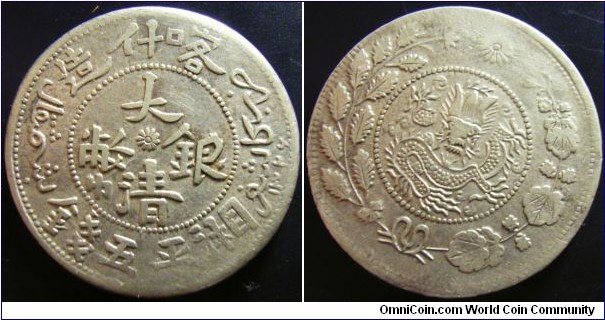 |
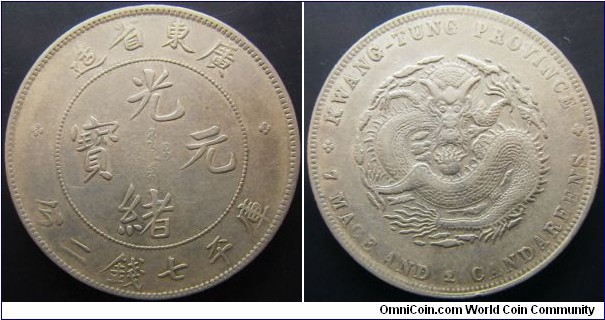 |
Silver |
银 |
A die hard metal that many Chinese loved until the
Chinese economy collapsed and many provinces were torn apart from
various Western occupations. Note when you see the denomination mace and
candareens, it refers to the traditional Chinese measurement in
particular to silver coinage. So when you see 7 mace 2 candareens, it
refers to 1 Chinese silver yuan or a dollar. 1 mace weighs 3.78g and 1
candareen would be 1/10 of that. |
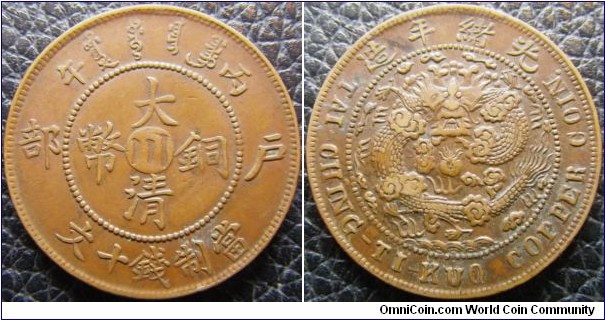 |
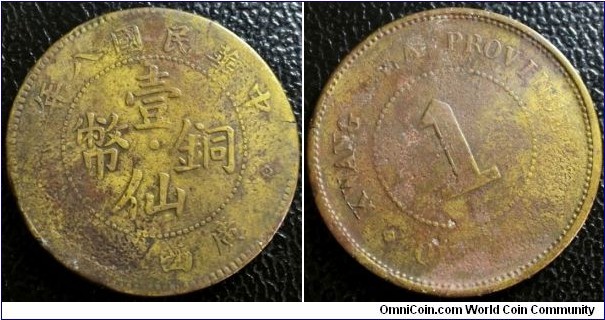 |
Copper |
铜 |
In Chinese literature, copper coins are usually
classified as follows: red copper, yellow copper and white copper. It's
not that hard to guess what they are: red copper has higher copper
content, yellow copper as bronze / brass and white copper as nickel
copper coinage. Shown here is two examples of both "red" and "yellow"
copper. Of course, the public reckoned they got ripped off with yellow
copper while some "government officers" might say it looks similar to
gold. Reality is Chinese love their red color. |
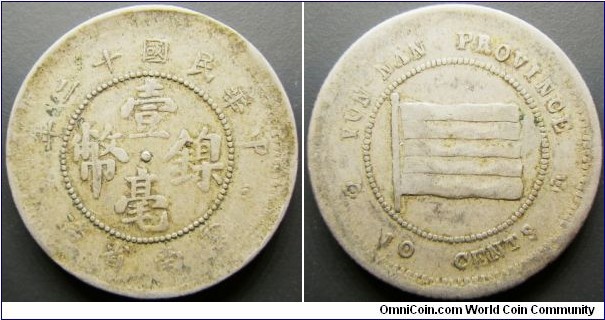 |
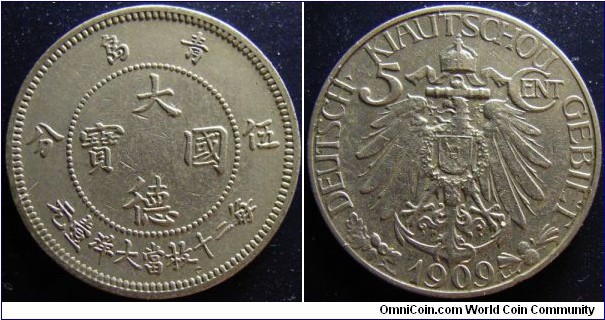 |
Nickel |
镍 |
First introduced by the Germans in 1909 in Kiau Chau
now known as Qing Dao, part of Shandong province.
It was taken up slowly by the public as silver prices shot up and became
unaffordable. Nickel coinage history didn't last long as the war begun -
the Japanese occupation bought up as much nickel coins possible as the
metal content was worth more than the face value. |
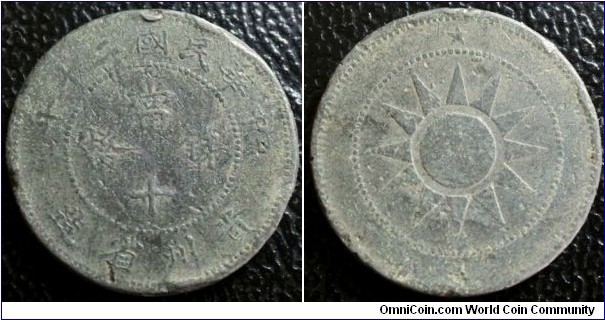 |
Think I only need one example... |
Antimony |
锑 |
Unusual coinage struck in Kweichow province (Guizhou
province). Only world coinage struck in this metal.Why this element is
interesting is because of its metalloid property.
This coin was first introduced as Kweichow is a province that is less
well off from her neighbours. Poor in copper and silver, but rich in
antimony and lead, the local government thought it can solve its coinage
problem with the world's first antimony coinage.
The real irony of this coin is when it was first introduced, it was
immediately rejected by the public as it is too odd as well as it didn't
fare very well in circulation. To make matters worse, instead of
honoring the coin by face value, it was worth only a quarter.
More can be read here:
http://www.charm.ru/library/antimony.htm
|
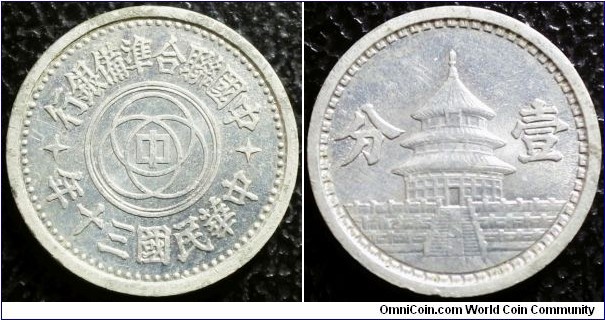 |
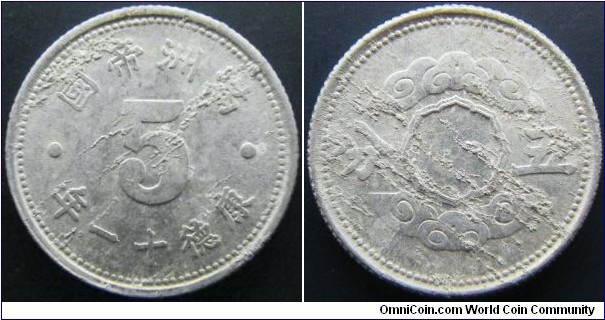 |
Aluminium |
铝 |
Introduced early by the Chinese in 1940, it became
obvious that the situation of metals became pretty drastic. |
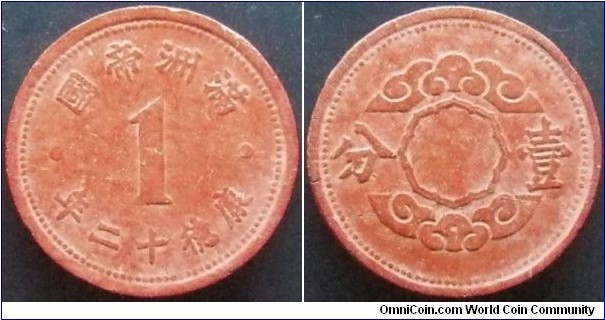 |
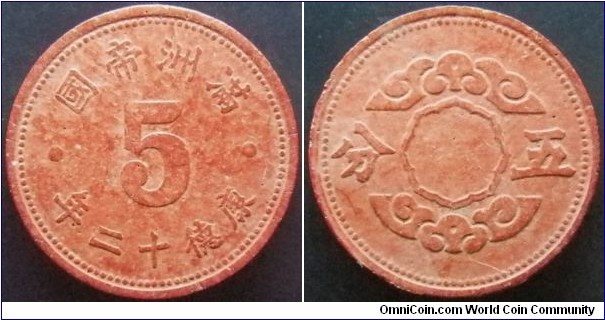 |
Red fibre |
纤维 |
Introduced in the last two years of the Japanese
occupation of Manchuria (1944-45), the Japanese couldn't afford to send
aluminium to China as it could be used for aircrafts as well as for her
coinage. The result is coins struck or rather baked (?) in red fibre.
Also called as paper coin at one stage in China.
|










